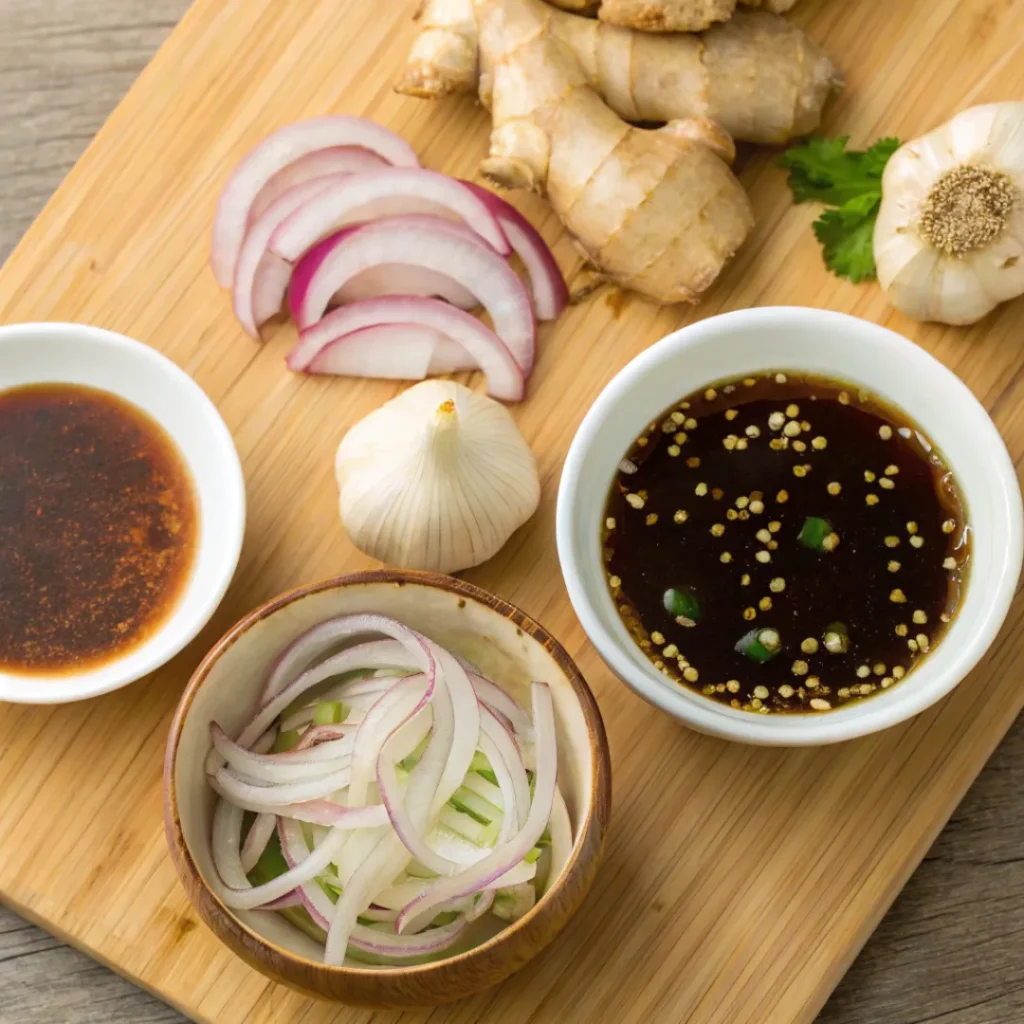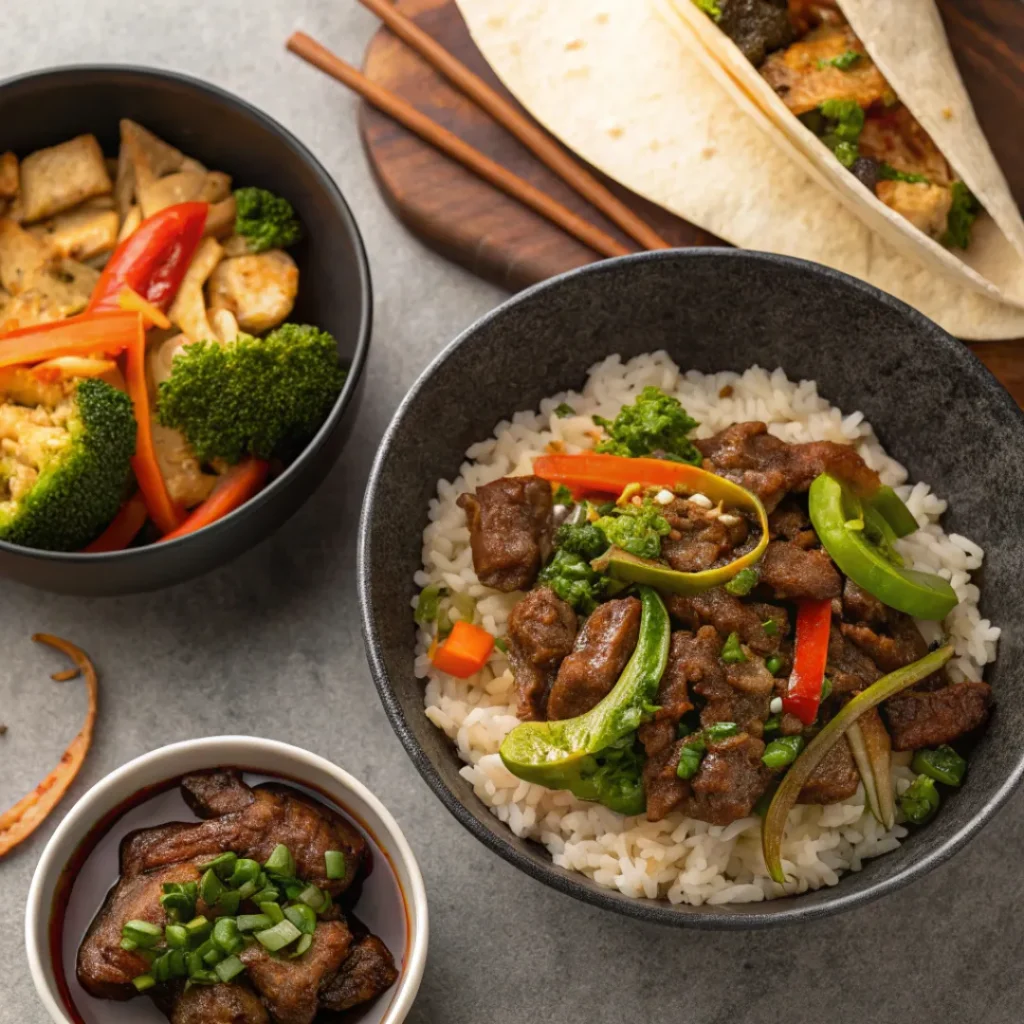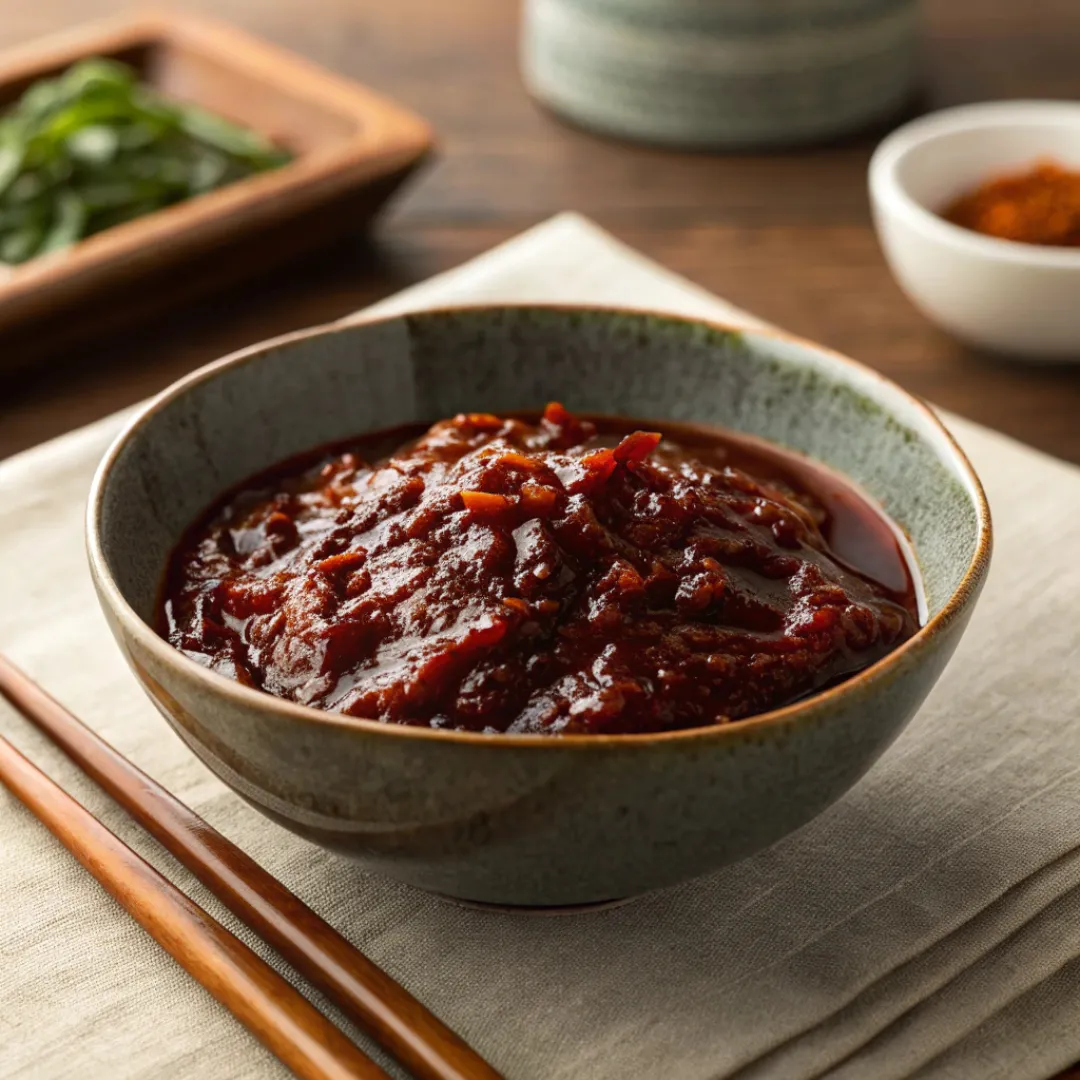Bulgogi sauce is the flavorful heart of one of Korea’s most iconic dishes. Known for its rich, savory, and slightly sweet profile, this sauce transforms thin slices of meat into the delicious, tender bites that make bulgogi so popular. But what is bulgogi sauce made of, exactly? In this article, we’ll break down the key ingredients that give bulgogi sauce its signature taste, explain how each one plays a role, and explore some tasty variations and creative ways to use it beyond traditional Korean BBQ.
Understanding Bulgogi
Before diving into the specifics of bulgogi sauce, it’s important to understand the dish it complements. Bulgogi, which translates to “fire meat,” traditionally features thinly sliced beef marinated in bulgogi sauce and then grilled or stir-fried. The dish dates back centuries and remains deeply ingrained in Korean culinary tradition, often appearing during special occasions and family gatherings.
Bulgogi’s popularity has spread beyond Korea, and today, people enjoy it in various forms around the world. The secret to its global appeal lies in the marinade—bulgogi sauce—which perfectly balances salty, sweet, and umami flavors, tenderizing the meat and infusing it with aromatic goodness.
Exploring the Key Ingredients
Bulgogi sauce typically includes a combination of ingredients that create its signature flavor. Each ingredient plays a crucial role in enhancing the overall taste of the dish.

Soy Sauce: The Umami Base
Soy sauce serves as the cornerstone of bulgogi sauce. As the primary source of saltiness, it lays the foundation for the umami flavor that defines bulgogi. Soy sauce is made by fermenting soybeans with wheat, water, and salt, resulting in a rich, dark liquid packed with glutamates—compounds responsible for the savory taste.
Types of Soy Sauce:
You can find different types of soy sauce, ranging from light to dark, each with varying levels of saltiness and depth of flavor. In bulgogi sauce, dark soy sauce is often preferred for its richer flavor and deeper color.
Why Soy Sauce?
The umami provided by soy sauce helps to accentuate the natural flavors of the meat, while its saltiness balances the sweetness from other ingredients.
Sweetness with Sugar or Honey
The sweetness in bulgogi sauce typically comes from sugar or honey. This ingredient balances the salty and savory notes, adding a layer of complexity to the sauce.
Sugar
White or brown sugar is commonly used in traditional bulgogi sauce. Brown sugar, in particular, adds a slight molasses flavor, which can deepen the overall taste.
Honey
Honey is another option that not only sweetens the sauce but also adds a floral note and a bit of richness.
Role in the Sauce
Sweetness is essential in creating the signature bulgogi flavor. It also helps in caramelizing the meat during cooking, giving bulgogi its characteristic glazed appearance and slightly crispy texture.
The Role of Sesame Oil
Sesame oil plays a key role in many Korean dishes, and bulgogi sauce is no exception. This oil, made from toasted sesame seeds, brings a nutty, aromatic quality to the sauce that complements the other ingredients.
Toasted vs. Raw Sesame Oil
Toasted sesame oil is preferred for its intense flavor and fragrance. Cooks usually add it at the end of cooking or directly to the marinade to preserve its delicate aroma.
Enhancing the Flavor
Sesame oil’s nutty richness enhances the depth of the sauce, adding warmth and an additional layer of flavor that makes bulgogi sauce so distinctive.
Garlic for Savory Depth
Garlic is a staple in Korean cooking, and it plays a critical role in bulgogi sauce. Freshly minced garlic infuses the sauce with a pungent, savory depth that is both aromatic and flavorful.
Why Garlic?
The sharpness of garlic cuts through the richness of the soy sauce and sesame oil, providing balance. Its natural oils are released during cooking, blending seamlessly with the meat and other ingredients.
Amount and Preparation
You can adjust the quantity of garlic depending on personal preference, but it’s usually used generously. Minced or grated garlic ensures even distribution throughout the sauce.
Freshness from Green Onions
Green onions, or scallions, often add freshness and a mild, sharp flavor to bulgogi sauce. They provide a contrast to the deeper, richer flavors of the sauce.
Role in the Sauce
Green onions offer a subtle onion flavor that isn’t as overpowering as raw onions. They also add a slight crunch when cooked, contributing to the texture of the dish.
Preparation
Typically, the white part of the green onion is minced and added to the marinade, while the green part can be used as a garnish or mixed in for additional flavor.
Tenderizing with Asian Pear or Apple
Traditional bulgogi sauce often includes Asian pear or apple as a natural tenderizer. This fruit softens the meat and adds a subtle sweetness due to its high content of enzymes and sugar.
Asian Pear
The most traditional choice, Asian pear, adds a subtle sweetness and helps to tenderize the meat, making it melt-in-your-mouth tender.
Apple
Some variations use apple, which also provides similar tenderizing properties. Both fruits break down the protein fibers in the meat, making it softer and more flavorful.
Why It’s Important
Including fruit not only enhances the sauce’s sweetness but also ensures that the beef becomes incredibly tender after marinating.
A Hint of Spice with Black Pepper
Black pepper is a simple yet essential addition to bulgogi sauce. It introduces a mild heat that complements the other flavors without overpowering them.
Role in the Sauce
The pepper’s subtle spice helps to balance the sweetness and adds a layer of complexity to the sauce.
Quantity
A small amount is typically used, allowing the pepper to enhance the overall flavor profile without dominating it.
Adding Ginger for Warmth
Ginger is not always included in bulgogi sauce, but when it is, it adds a warm, slightly spicy undertone that pairs well with the other ingredients.
Why Ginger?
Ginger’s natural heat and slight sweetness can complement the garlic and add depth to the flavor profile of the sauce. Learn more about ginger’s benefits.
When to Use
If included, ginger should be minced or grated finely to ensure it blends well with the sauce and does not overpower the other flavors.
Crafting the Perfect Bulgogi Sauce
Now that we’ve explored the key ingredients, let’s take a look at how they come together to make bulgogi sauce. The process is relatively straightforward, but attention to detail ensures that the flavors meld perfectly.

Step 1: Preparing the Ingredients
Start by preparing all the ingredients. Mince the garlic, finely chop the green onions, and grate the Asian pear or apple. Measure out the soy sauce, sugar or honey, sesame oil, and black pepper.
Step 2: Mixing the Marinade
In a large mixing bowl, combine the soy sauce, sugar or honey, and sesame oil. Stir until the sugar is fully dissolved. Next, add the minced garlic, chopped green onions, grated pear or apple, and black pepper. Mix thoroughly to ensure all the ingredients are evenly distributed.
Step 3: Marinating the Meat
Place the thinly sliced beef into the bowl with the marinade. Use your hands or a spoon to gently massage the marinade into the meat, making sure each piece is fully coated. Cover the bowl with plastic wrap and refrigerate for at least 30 minutes. For the best results, marinate the meat overnight.
Step 4: Cooking the Bulgogi
Once the beef has marinated, it’s ready to cook. You can either grill the beef over medium-high heat or stir-fry it in a hot pan. Cook the beef until it browns and caramelizes on the edges, while remaining tender and juicy.
Step 5: Serving and Enjoying
Serve the cooked bulgogi with steamed rice, kimchi, and other Korean side dishes. The bulgogi should be tender, flavorful, and slightly sweet with a savory, umami-rich sauce that enhances the natural flavors of the beef.
Bulgogi Sauce Variations
While traditional bulgogi sauce is beloved for its classic flavor, many variations cater to different tastes and dietary preferences. Here are a few popular options:
Spicy Bulgogi Marinade
For those who prefer a bit of heat, you can make a spicy version of bulgogi sauce by adding gochujang (Korean red chili paste) or red pepper flakes. This addition brings a kick to the sauce while maintaining its sweet and savory balance.
Gluten-Free Version
To create a gluten-free version of bulgogi sauce, substitute the regular soy sauce with tamari or a gluten-free soy sauce alternative. The other ingredients can remain the same, ensuring that those with gluten sensitivities can still enjoy the dish.
Vegan-Friendly Bulgogi Sauce
A vegan version of bulgogi sauce can be made by using plant-based alternatives. Replace the honey with maple syrup or agave nectar, and use a soy sauce made without fish or animal products. You can use this version to marinate tofu, seitan, or other plant-based proteins.
Fruit-Enhanced Variations
In addition to pear or apple, other fruits like kiwi or pineapple can be used to tenderize the meat and add a unique flavor. These fruits contain enzymes that break down protein, making the meat even more tender. However, be careful with the quantity as too much can overly tenderize the meat, affecting its texture.
Creative Uses for Bulgogi Sauce
While bulgogi sauce is most commonly associated with the classic Korean beef dish, its versatility extends far beyond that. Here are a few creative ways to use bulgogi sauce:

Stir-Fry Enhancer
Use bulgogi sauce as a stir-fry sauce for vegetables, tofu, or chicken. The sauce’s rich flavor enhances a variety of ingredients, making it a quick and easy option for a weeknight meal.
Fusion Tacos
Incorporate bulgogi sauce into a fusion dish like bulgogi tacos. Marinate beef or another protein in the sauce, then grill and serve in soft tortillas with fresh vegetables and a spicy mayo for a Korean-Mexican twist.
Marinade for Grilling
Bulgogi sauce makes an excellent marinade for grilled meats like chicken or seafood. The sauce’s sweet and savory profile pairs well with the smoky flavors of grilled foods, making it a great option for outdoor cooking.
Hearty Bulgogi Bowls
Create a bulgogi bowl by serving the marinated and cooked meat over a bed of rice, topped with vegetables, a fried egg, and a drizzle of extra sauce. This combination makes for a hearty and satisfying meal.
Frequently Asked Questions
What is bulgogi sauce made of?
Bulgogi sauce is a flavorful marinade primarily made of soy sauce, sugar or honey, sesame oil, garlic, green onions, and sometimes ginger. Traditional recipes often include grated Asian pear or apple to tenderize the meat and add sweetness.
Can I make bulgogi sauce without soy sauce?
Yes, you can substitute soy sauce with tamari for a gluten-free option, or use coconut aminos for a soy-free alternative. These substitutes will still provide the umami flavor essential to bulgogi sauce.
Is bulgogi sauce spicy?
Traditional bulgogi sauce is not spicy. However, you can make a spicy version by adding gochujang (Korean red chili paste) or red pepper flakes to the marinade.
How long should I marinate the meat in bulgogi sauce?
For the best flavor, marinate the meat for at least 30 minutes. Marinating overnight will yield even more tender and flavorful results, as the sauce has more time to penetrate the meat.
Can bulgogi sauce be used for other dishes?
Absolutely! Bulgogi sauce is versatile and can be used as a marinade for chicken, pork, tofu, or even vegetables. It also works well as a stir-fry sauce or a base for fusion dishes like bulgogi tacos.
Conclusion
Bulgogi sauce is the heart and soul of the classic Korean dish, bulgogi. Its blend of soy sauce, sugar, sesame oil, garlic, and other ingredients creates a marinade that is both flavorful and versatile. Whether you stick to the traditional recipe or experiment with variations, bulgogi sauce is sure to bring a taste of Korea to your table.
Understanding the ingredients and the process of making bulgogi sauce allows you to appreciate its complexity and adapt it to your preferences. Whether you’re making beef bulgogi, trying a vegan version, or using the sauce in a new way, this sauce is a gateway to exploring the rich and diverse world of Korean cuisine.

